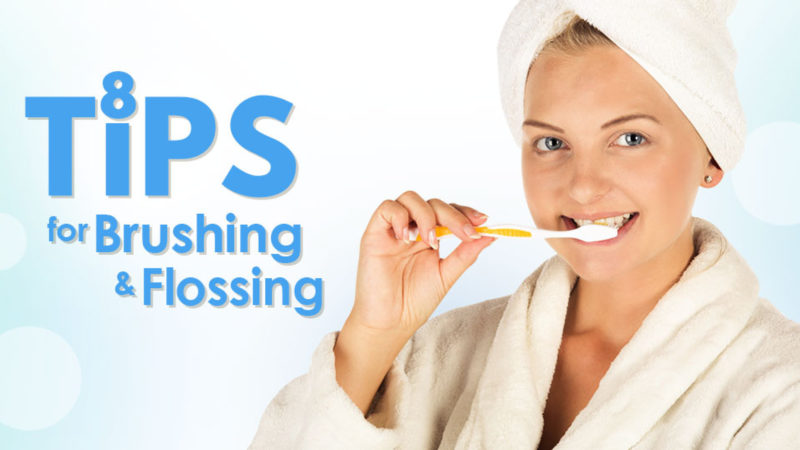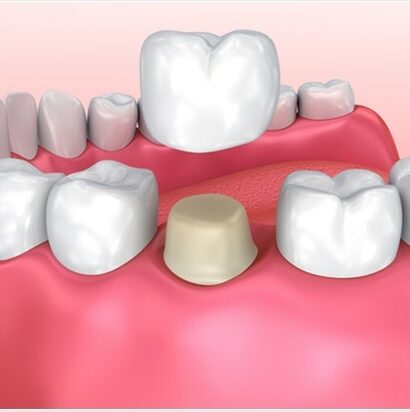With proper brushing and flossing techniques, you can have white teeth and healthy gums throughout your life. When you have healthy teeth, there is less probability of tooth decay and gum disease.
Why is it essential to brush and floss your teeth?
There is a reason why parents and dentists give so much importance to brushing and flossing your teeth. Brushing helps to eradicate plaque, which is nothing but a sticky and colorless film of bacteria. It stays on your teeth, contacts the food inside your mouth, and generates acids. And what do acids do? They create cavities.
Brushing and flossing techniques to have good dental health
Proper brushing techniques can help to clean teeth and gums properly. Here are a few techniques you can use:
1. Use a soft toothbrush and keep it at 45-degree angle
Place a small portion of fluoridated toothpaste on a soft-bristled toothbrush. Keep the toothbrush at a 45-degree angle to the gum line to protect your enamel.
2. Push your toothbrush back and forth in circular motions
Move your toothbrush in small circular motions to clean your teeth properly. Be patient and clean one tooth at a time. Make sure the tips of bristles are against the gum line. Don’t press the bristles too hard against your teeth. The tips of the bristles are enough to clean your teeth.
Move the toothbrush to clean the backside of the lower and upper teeth. Also, clean the side of the teeth that face your tongue.
3. Brush the top surface of the back teeth properly
Brush across the chewing surface of the back teeth. Give special attention to the top surface of the back teeth. Check if the bristles reach into spaces between teeth, groves, and crevices.
4. Brush your tongue to prevent bad breathe
Move your toothbrush from the back of your tongue forward to eliminate bacteria and bad breath.
5. Angle the head of the toothbrush in an up-down position
Angle the head of the toothbrush in an up-down position to brush the bottom side of the front teeth. Again, keep the tip of the brush in an up-down position toward the roof of the mouth to clean the inside portion of the front teeth. Move the toothbrush in circular motions until the selected area is properly cleaned.
One tip: Change your toothbrush once every 3-4 months. If you can buy new clothes or have dinner at a good restaurant every 3-4 months, then you can purchase a new toothbrush too. Consider this as a necessary expense.
Flossing tips to take care of your teeth and gums
1. Remove the floss from the dispenser. Take almost 46 centimeters strip of dental floss and wind it around the middle fingers of your hand. Make sure you keep 1-inch section open to floss your top teeth first and then the bottom part.
2. Push the floss between the teeth with the help of index fingers. Move it up and down around your gum and against your teeth.
3. Floss between each and every tooth so that all the food particles are removed. Floss behind your back teeth also.
What to do if you’re not good at flossing
Do you find it tough to floss your teeth? In that case, you can use an interdental cleaner. For instance, pre-threaded flosser, toothpick, small brushes, etc. Place them between your teeth to remove the food particles. Your other options are water flosser or silicone plaque remover.
How soon should you visit the dentist?
- When your gums start bleeding when you brush
- When there is an unusual sensitivity in your teeth
- When there are mouth sores that don’t heal
- When you have swollen gums
- When there are changes in the alignment of your top and bottom teeth
- When you have bad breath for several days
Should you use mouthwash also?
Dentists recommend using a good mouthwash after brushing because it helps to avoid gingivitis, plaque, and tartar. A good mouthwash can also help to reduce bad breath. For instance, it is good to rinse your mouth with mouthwash in the morning before leaving for work. It freshens your breath.
Use an anti-bacterial mouthwash to reduce bacteria that create plaque and gum disease.
Conclusion
Try to brush your teeth twice a day for at least 2 minutes – before breakfast and after finishing your dinner. You can floss your teeth once every day, generally at bedtime. Avoid junk foods because that is neither good for your body nor your teeth. Consult a good dentist every 6 months to know if your teeth and gum need extra care. If you stay in Rajarhat, then ask your friends to refer a good dentist in New Town (Kolkata) to you. You can also look for an experienced dentist in Google. All you need to type ‘good dentist in the name of your locality.’ That’s all.













